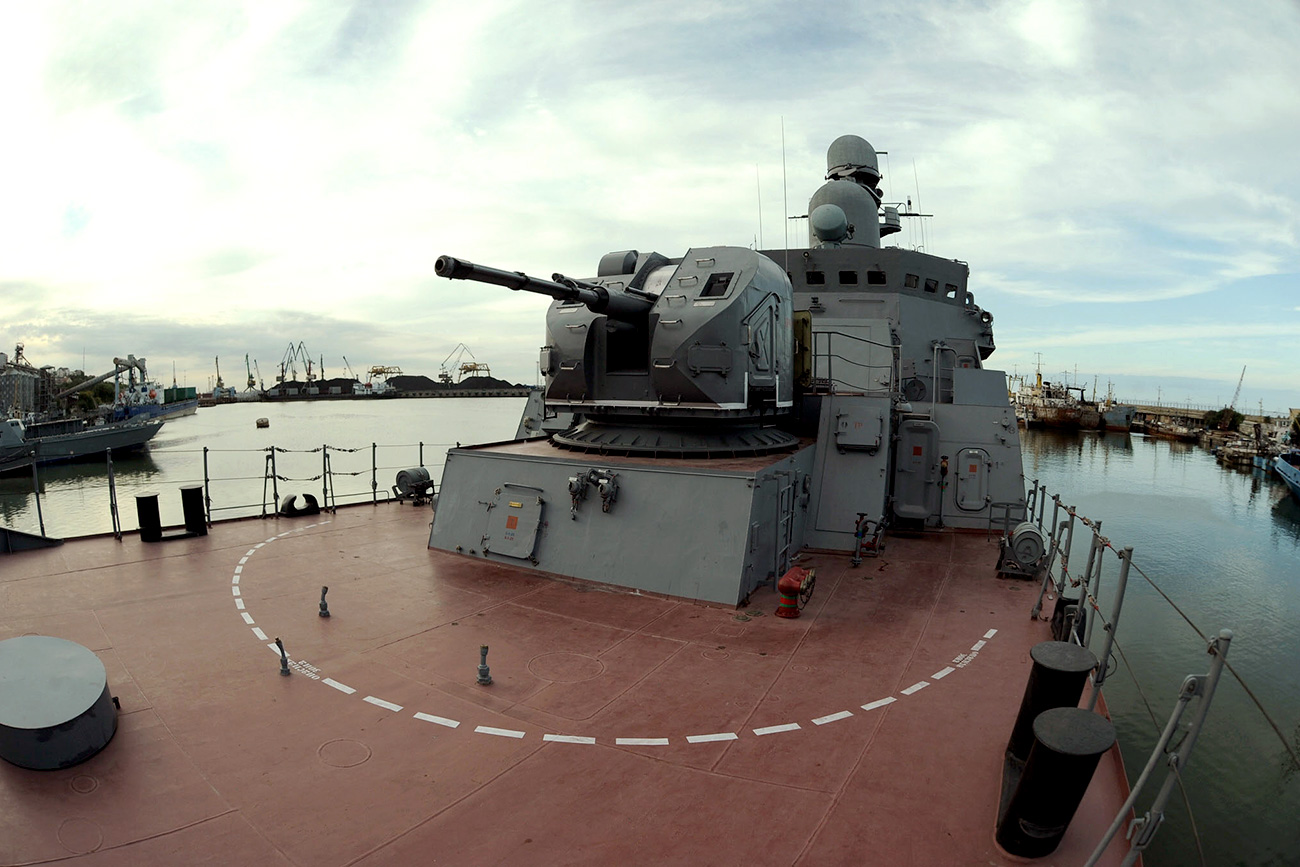
The latest Russian Navy missile frigate Dagestan at the port of Makhachkala.
Dmitry Rogulin/TASSImagine a huge gun that can’t be detected by radar. Well, Russia might have one soon. A decision to integrate stealth technologies, widely employed by Russian and American jets and bombers, on battleship guns was taken by Russia’s Defense Ministry last year.
However, Russian Navy commanders are currently waiting for the results of tests carried out on the newest AK-176 MA naval cannon before finalizing plans to integrate the latest composite materials, and the weapon system, into the military’s next generation guided missile corvettes.
“Russia plans to build all its new ships using stealth technologies. It means that all weapons have to be put inside of a ship instead of staying on deck – this step should make ships invisible on enemies’ radars and to some anti-ship missiles,” Vadim Kozulin, a professor of Academy of Military Science, told RBTH.
As he explained, each ship’s superstructure and artillery systems generate most of a vessel’s radar returns. Due to their shapes and rich metal content, weapons often constitute the main signature when illuminated by enemy radars.
However, using stealth technologies on ships is not a Russian innovation.
“For example, the U.S. Navy uses guided missile destroyers designed as multi-mission stealth ships with a focus on land attacks - such as the Zumwalt-class destroyer. The whole ship is made from these stealth materials and uses such technologies,” added Kozulin.
The new stealth gun is a successor to the Soviet-era naval rapid-fire gun: the AK-176. Alongside new armor made out of radar reflecting materials, its fire rate has been boosted and new, various types of ammo have been tailor-made for the weapon.
“The new AK-176 MA weighs around 10 tons and can fire 150 76 mm projectiles per minute. It can hit both ships and land targets up to 15km away,” Alexey Ramm, a military analyst for the Izvestia newspaper, told RBTH.
According to Ramm, the AK-176 MA will also be decked out with a digital data system enabling it to mount and follow targets automatically. “Yet the decision to open fire will be taken by a military officer on board. Today no one can allow electronic systems to fully operate independently and take vital decisions without a human,” Ramm added.
The AK-176 MA is currently undergoing testing, and experts believe it should be ready by the end of 2017 - only then will the Russian Navy decide to adopt the weapon or not.
If using any of Russia Beyond's content, partly or in full, always provide an active hyperlink to the original material.
Subscribe
to our newsletter!
Get the week's best stories straight to your inbox